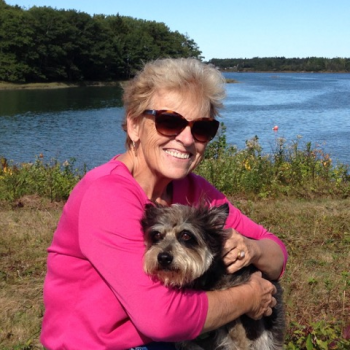Twin towers still cast long shadow
“Traveling by a work site and seeing rebar, or the smell of wet smoke can take me right back.”
For Lynn Tierney, former deputy fire commissioner of the New York City Fire Department, there are triggers that can turn the calendar back to Sept. 11, 2001.
Seventeen years later, she can recall every detail from some of that day’s events yet others are blurred. She remembers a New York City street with 400 pairs of firemen’s boots lined up along it. They were dropped by responding firefighters escaping the collapse of the towers.
That day, her calendar included a job interview at the Port Authority offices in the World Trade Center.
It was a space she knew well, having previously worked there for 13 years. “I knew every inch of those buildings,” she recalled.
Within hours, she would see the buildings topple, realize many of her close friends and co-workers had died and come close to death herself.
On Sept. 13, Tierney will speak about her experiences when the Boothbay Harbor Rotary Club holds its annual Hometown Heroes dinner at Spruce Point Inn, honoring first responders in our region.
Tierney shared some of her memories with the Boothbay Register.
Asked what the public didn’t know about that day, she said those at home watching television had more information at first than those on the scene. “We learned about the other planes intermittently throughout the day,” she said.
Tierney asked her close friend First Deputy Commissioner William Feehan if the disaster could have been caused by a mid-air collision. He knew immediately what had happened. “It’s terrorism,” he told her. Hours later, Feehan, 71, became the oldest firefighter to lose his life at the World Trade Center.
As Tierney explained, “Fire rises. We knew that we could not have put the fire out and we would lose the top 25 floors of each building. It was never in anyone’s mind that any of the buildings would come down.”
But Deputy Chief Raymond M. Downey, an internationally recognized collapse expert, believed they might. At his direction, a “collapse zone” was created. At that point, the mission changed from fighting the fire to helping people get out.
Downey lost his life that day, along with Port Authority Police Department Chief James Romito and other friends Tierney had known for years.
She also came close to death.
When the second tower fell, Tierney was on the platform of a loading dock. "It was pitch black and you could chew the air. I could not believe that I was going to die on a loading dock.”
Through the darkness, she made her way down the stairs to her FDNY aide, Paul Iannizzotto. “We’re going to die today,” she told him. “Nope, nobody’s dying here today,” he answered.
Unfortunately that day, 343 FDNY members lost their lives. They helped 25,000 people get out of the World Trade Center before the towers collapsed.
The families of those firefighters were an immediate concern for their surviving colleagues. “Everyone watched the towers crumble over and over. But there were 343 families that crumbled that day, too,” Tierney explained.
Along with the tragedies were stories of courage and resilience.
Tierney worked with families to make sure they were treated well.
She believes it’s important to thank first responders at every opportunity. “There are 1.1 million firefighters in the U.S. and 800,000 of them are volunteers."
Tierney is collaborating with Peter King, Los Angeles Times editor and columnist, on a book about her experiences. Planned for completion in time for the 20th anniversary of the Sept. 11 attack, its working title is “Be Not Afraid.”
Now a full-time resident of Owl’s Head, she consults in crisis management and crisis communications. She and her rescue dog, Swiper, walk the beach every day.
“There’s randomness and chaos in the world,” she said. “Life is precious and short and you never know. Live it to the fullest.”






























